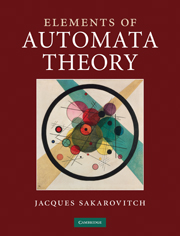M. Pascal's division machine
Published online by Cambridge University Press: 05 September 2013
Summary
Division? you say to yourself, Do you not rather mean the Pascaline, the adding machine which the young Blaise built to relieve his father from tiresome calculations and which once and for all set France in the firmament of computerbuilding nations?
— No indeed, I assure you, it is of division that I want to speak to you; but your surprise is not misplaced, and Pascal himself would be intrigued that we speak of a machine.
We can read however in his complete works an original article2 in which the mathematician–philosopher analyses the mechanism of division. Let us give him the floor:
Nihil tritius est apud arithmeticos quam…
On second thoughts, let us turn instead to his translator:
Nothing in arithmetic is better known than the proposition according to which any multiple of 9 is composed of digits whose sum is itself a multiple of 9. […] In this little treatise […], I shall also set out a general method which allows one to discover, by simple inspection of its digits, whether a number is divisible by an arbitrary other number; this method applies not only to our decimal system of numeration (which system rests on a convention, an unhappy one besides, and not on a natural necessity, as the vulgar think), but it also applies without fail to every system of numeration having for base whatever number one wishes, as may be discovered in the following pages.
- Type
- Chapter
- Information
- Elements of Automata Theory , pp. 1 - 6Publisher: Cambridge University PressPrint publication year: 2009
- 1
- Cited by



